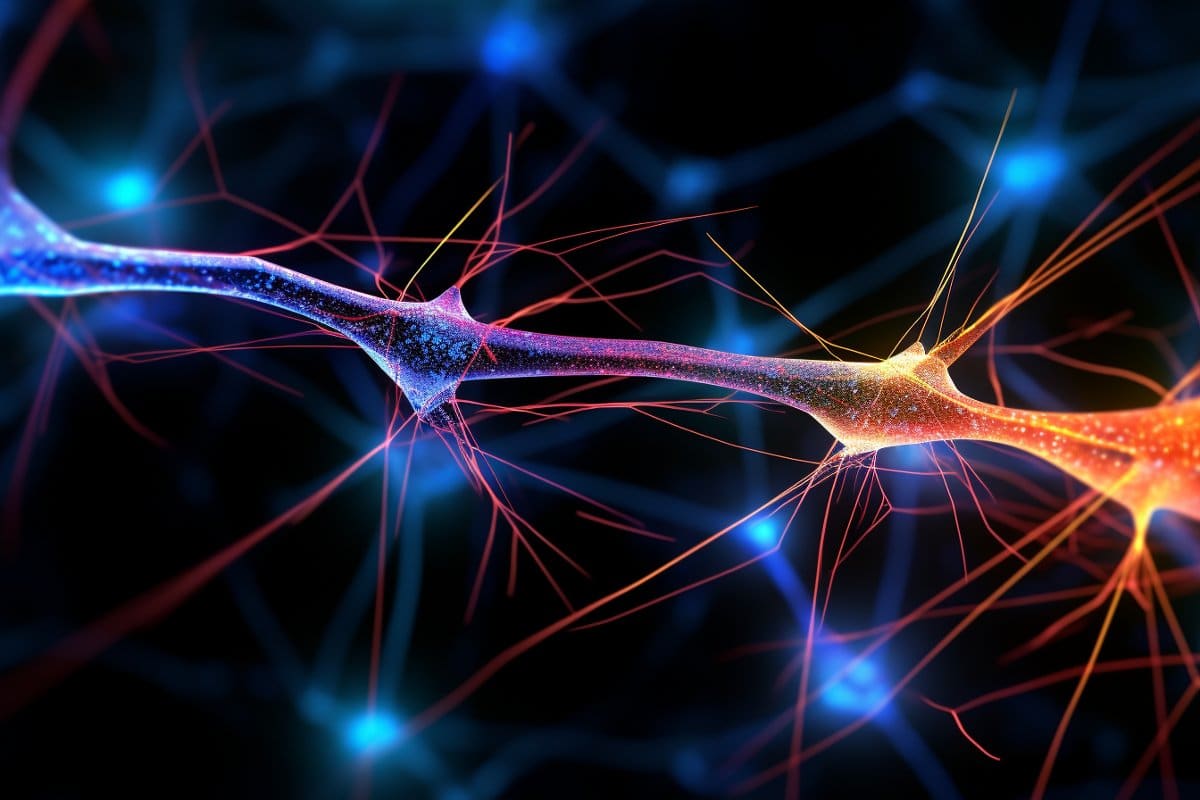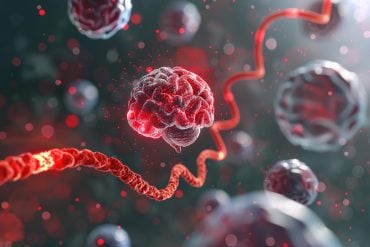Summary: Researchers developed an experimental computing system, resembling a biological brain, that successfully identified handwritten numbers with a 93.4% accuracy rate.
This breakthrough was achieved using a novel training algorithm providing continuous real-time feedback, outperforming traditional batch data processing methods which yielded 91.4% accuracy.
The system’s design features a self-organizing network of nanowires on electrodes, with memory and processing capabilities interwoven, unlike conventional computers with separate modules.
This advancement in brain-inspired computing could revolutionize AI applications, requiring less power and excelling in complex data analysis.
Key Facts:
- The nanowire network system demonstrated superior learning capabilities, achieving 93.4% accuracy in identifying handwritten numbers.
- The system’s unique training algorithm and memory storage within its physical structure set it apart from traditional computing approaches.
- This technology shows potential for energy-efficient AI applications, capable of processing complex, evolving data in real-time.
Source: UCLA
An experimental computing system physically modeled after the biological brain “learned” to identify handwritten numbers with an overall accuracy of 93.4%.
The key innovation in the experiment was a new training algorithm that gave the system continuous information about its success at the task in real time while it learned.

The algorithm outperformed a conventional machine-learning approach in which training was performed after a batch of data has been processed, producing 91.4% accuracy. The researchers also showed that memory of past inputs stored in the system itself enhanced learning. In contrast, other computing approaches store memory within software or hardware separate from a device’s processor.
BACKGROUND
For 15 years, researchers at the California NanoSystems Institute at UCLA, or CNSI, have been developing a new platform technology for computation. The technology is a brain-inspired system composed of a tangled-up network of wires containing silver, laid on a bed of electrodes.
The system receives input and produces output via pulses of electricity. The individual wires are so small that their diameter is measured on the nanoscale, in billionths of a meter.
The “tiny silver brains” are very different from today’s computers, which contain separate memory and processing modules made from atoms whose positions do not change as electrons flow through them.
In contrast, the nanowire network physically reconfigures in response to stimulus, with memory based on its atomic structure and spread throughout the system. Where wires overlap, connections can form or break — analogous to the behavior of synapses in the biological brain where neurons communicate with one another.
Collaborators in the research, at the University of Sydney, developed a streamlined algorithm for providing input and interpreting output. The algorithm is customized to exploit the system’s brain-like ability to change dynamically and to process multiple streams of data simultaneously.
METHOD
The brain-like system was made up of a material containing silver and selenium, which was allowed to self-organize into a network of entangled nanowires on top of an array of 16 electrodes. Scientists trained and tested the nanowire network using images of handwritten numbers, a dataset created by the National Institute of Standards and Technology and often used for benchmarking machine-learning systems.
Images were communicated to the system pixel-by-pixel using pulses of electricity each lasting one-thousandth of a second, with differing voltages representing light or dark pixels.
IMPACT
Still in development, the nanowire network is expected to require far less power than silicon-based artificial intelligence systems to perform similar tasks. The network also shows promise at tasks that current AI struggles to accomplish: making sense of complex data, such as patterns in weather, traffic and other systems that change over time. To do so, today’s AI requires tremendous amounts of training data and extremely high energy expenditures.
With the type of co-design used in this study — hardware and software developed in tandem — nanowire networks may ultimately serve a complementary role alongside silicon-based electronic devices.
Brain-like memory and processing embedded in physical systems capable of continuous adapting and learning may be particularly well-suited to so-called “edge computing,” which processes complex data on the spot without requiring communication with far-off servers.
Potential uses include robotics, autonomous navigation in machines such as vehicles and drones, and the smart device technology that makes up the Internet of Things, as well as health monitoring and coordinating measurements from sensors in multiple locations.
AUTHORS
The corresponding authors of the study are James Gimzewski, a UCLA distinguished professor of chemistry and CNSI member; Adam Stieg, a UCLA research scientist and associate director of the CNSI; Zdenka Kuncic, a professor of physics at the University of Sydney; and Ruomin Zhu, a University of Sydney doctoral student who is also first author. Other co-authors are Sam Lilak, who received his doctorate from UCLA in 2022; and Alon Loeffler and Joseph Lizier of the University of Sydney.
FUNDING
The study was supported by the University of Sydney and the Australian-American Fulbright Commission.
About this computational neuroscience research news
Author: Nicole Wilkins
Source: UCLA
Contact: Nicole Wilkins – UCLA
Image: The image is credited to Neuroscience News
Original Research: Open access.
“Online dynamical learning and sequence memory with neuromorphic nanowire networks” by James Gimzewski et al. Nature Communications
Abstract
Online dynamical learning and sequence memory with neuromorphic nanowire networks
Nanowire Networks (NWNs) belong to an emerging class of neuromorphic systems that exploit the unique physical properties of nanostructured materials. In addition to their neural network-like physical structure, NWNs also exhibit resistive memory switching in response to electrical inputs due to synapse-like changes in conductance at nanowire-nanowire cross-point junctions.
Previous studies have demonstrated how the neuromorphic dynamics generated by NWNs can be harnessed for temporal learning tasks.
This study extends these findings further by demonstrating online learning from spatiotemporal dynamical features using image classification and sequence memory recall tasks implemented on an NWN device.
Applied to the MNIST handwritten digit classification task, online dynamical learning with the NWN device achieves an overall accuracy of 93.4%.
Additionally, we find a correlation between the classification accuracy of individual digit classes and mutual information. The sequence memory task reveals how memory patterns embedded in the dynamical features enable online learning and recall of a spatiotemporal sequence pattern.
Overall, these results provide proof-of-concept of online learning from spatiotemporal dynamics using NWNs and further elucidate how memory can enhance learning.







